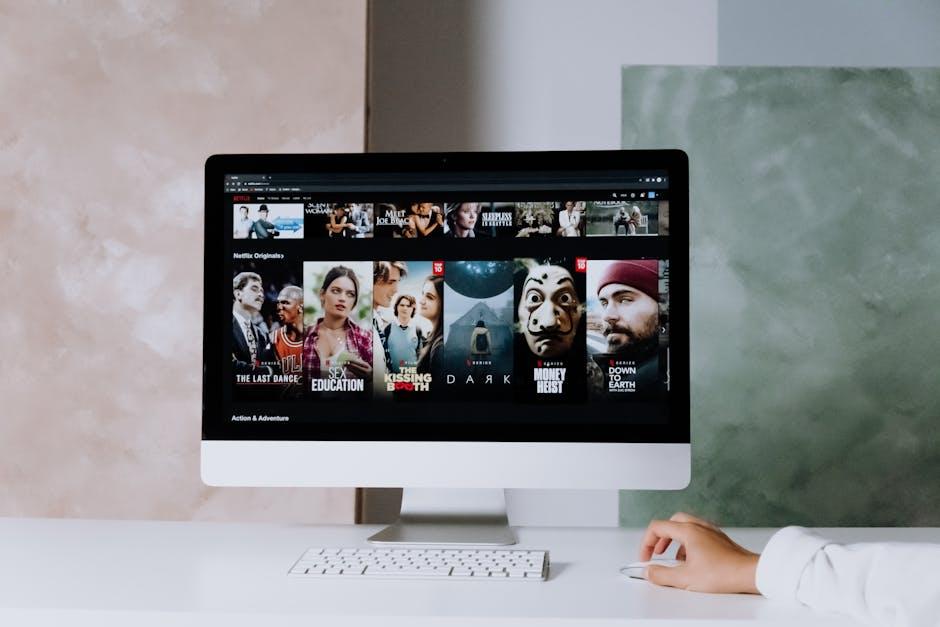In recent years, the rise of streaming platforms has revolutionized the way we consume media, offering unprecedented access to vast libraries of content at our fingertips. This transformation has reshaped entertainment consumption patterns, enabling viewers to binge-watch entire seasons of television shows in one sitting and explore a diverse array of films and documentaries without leaving their homes. However, as the convenience and abundance of streaming services continue to grow, questions arise about the potential implications of this media consumption model. Is the accessibility and volume of content fostering a culture of overconsumption, and if so, what are the broader societal and psychological impacts? This article seeks to explore these questions by examining the influence of streaming platforms on consumption behaviors, the potential consequences of media overindulgence, and the ways in which both consumers and providers are navigating this evolving digital landscape. Through a balanced analysis, we aim to shed light on whether the streaming era is encouraging a shift towards excessive consumption and what this might mean for the future of media engagement.
Impact of Streaming Platforms on Consumer Behavior
Streaming platforms have significantly transformed the way we consume media, leading to a shift in consumer behavior characterized by increased accessibility and a desire for instant gratification. With vast libraries of content available at the click of a button, viewers often find themselves engaging in marathon viewing sessions, a phenomenon commonly referred to as binge-watching. This behavior is not only fueled by the platforms’ strategic release of entire seasons but also by their sophisticated recommendation algorithms that keep users engaged by continuously suggesting new content tailored to their preferences.
- Accessibility: Streaming services remove the barriers of time and place, allowing consumers to watch their favorite shows and movies whenever and wherever they want.
- Personalization: Advanced algorithms create a personalized viewing experience, increasing user engagement and time spent on the platform.
- Content Abundance: The overwhelming amount of available content encourages viewers to consume more than they might have with traditional media.
While this shift has democratized content consumption and provided unprecedented choice, it also raises questions about potential overconsumption. The ease of access and tailored recommendations might lead to excessive viewing habits, with some users feeling compelled to continuously consume content to keep up with the latest trends. The psychological impact of this behavior is still being explored, as researchers consider whether the convenience of streaming contributes to a culture that prioritizes consumption over moderation.

Analyzing the Psychological Effects of Instant Access to Content
With the rise of streaming platforms, audiences now experience an unprecedented level of instant access to content. This shift in media consumption has led to significant psychological effects that warrant exploration. The constant availability of entertainment can blur the lines between leisure and compulsion, leading individuals to binge-watch series and movies without pause. This behavior, while seemingly harmless, can contribute to a culture of overconsumption, where the value of content is measured by quantity rather than quality.
Several factors contribute to this phenomenon:
- Dopamine-driven engagement: The immediate gratification from consuming multiple episodes or movies in one sitting can trigger dopamine release, fostering a cycle of continuous viewing.
- Social pressures: The fear of missing out (FOMO) can push individuals to consume content rapidly to stay current with social conversations.
- Algorithmic influence: Streaming services use sophisticated algorithms to recommend content, often leading viewers to watch more than they initially intended.
While the convenience of streaming is undeniable, it’s essential to consider how this access impacts mental health and social dynamics. By understanding these psychological effects, viewers can make more informed decisions about their media consumption habits.

Examining the Environmental and Economic Costs of Streaming
In the digital age, the ease of accessing vast libraries of content at the click of a button has undeniably transformed consumer behavior. Streaming platforms, while offering unparalleled convenience and variety, have also introduced a complex set of challenges both environmentally and economically. The energy required to power data centers, transmit data, and maintain servers contributes significantly to carbon emissions. It’s important to recognize that each streamed video or song demands a surprising amount of energy, which, when multiplied by billions of streams globally, results in a substantial environmental footprint.
From an economic perspective, the affordability of streaming subscriptions may mask the true cost of consumption. While consumers enjoy low monthly fees, the underlying business models often rely on high volumes of user engagement, encouraging excessive consumption patterns. This could potentially lead to unsustainable content production practices, where quantity trumps quality. Furthermore, the focus on continuous content creation places pressure on creators, who may feel compelled to produce at an accelerated pace to meet demand. As we examine these costs, it’s crucial to weigh the long-term impacts of streaming against its immediate benefits, exploring sustainable practices that could mitigate these issues.
- Energy consumption and carbon emissions from data centers
- Economic models promoting excessive consumption
- Pressure on content creators to produce more

Strategies for Responsible Consumption in the Digital Age
In an era where streaming services dominate our screens, it’s imperative to adopt strategies that promote responsible consumption. One effective approach is to curate a personal viewing schedule. Limiting screen time not only prevents binge-watching but also encourages viewers to engage with content more thoughtfully. Another strategy is to critically evaluate the content being consumed. By choosing quality over quantity, viewers can reduce the digital clutter in their lives and focus on content that truly resonates with them.
- Set Viewing Limits: Use built-in parental controls or app settings to set daily or weekly viewing limits.
- Create Watchlists: Prioritize shows and movies that align with personal interests and values.
- Engage in Discussions: Join online forums or book clubs that discuss streamed content to enhance understanding and gain diverse perspectives.
Moreover, it is beneficial to be aware of the environmental impact of streaming. Opting for lower resolution streaming when possible can significantly reduce energy consumption. Being mindful of these strategies not only enhances the viewing experience but also contributes to a more sustainable digital culture.







































